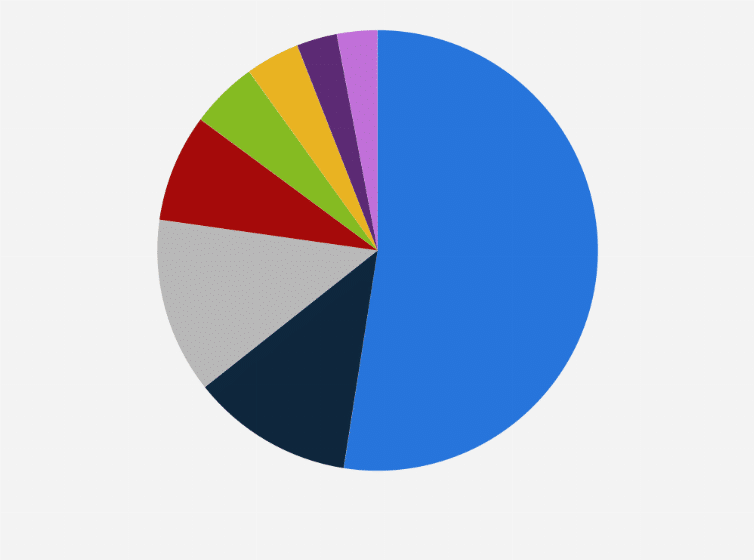For any business to be able to understand the present and predict its next move, it must pay attention to statistics. Business statistics is a significant tool that aids companies in making sound decisions as regards financial situations, forecasting consumer behavior, the number of employees to hire, marketing and advertising strategies to adopt, etc.
Let’s say you have a factory where you produce head warmers, for example; How do you know your target audience? How do you determine the number of head warmers to produce in a given season? How do you decide on the right marketing strategy to implement? The answer to these questions is in the use of business statistics. Read along to understand business statistics and why it is important.
What is Statistics
Statistics is the collection, compilation, presentation, representation, analysis, and interpretation of numerical and non-numerical data in order to make better decisions. In business, statistics are critical, and even little differences can have a big impact. Statistics give information that could be used to make sound business decisions. Without numbers, business managers would make judgments on assumptions, and assumptions cannot deliver effective outcomes.
Statistics is a means for making decisions under situations of uncertainty with calculable risks when numerical data are available. Because business is characterized by uncertainties and risks, statistics is helpful in business decision-making because it is a way for making decisions when numerical data are available.
The application of statistical approaches is gaining more and more importance in the decision-making process of businesses, as well as in every other aspect of human activity. Instead of relying on trial and error to make judgments, business owners and managers who have properly analyzed their data are able to make logical choices founded on facts.
Understanding Business Statistics
Business statistics is the practice of applying statistical approaches to the analysis and interpretation of data generated by organizations. This information can include sales numbers, comments from customers, traffic to a website, and a lot of other forms of data as well. Businesses have the opportunity to improve their decision-making, as well as their procedures and their profitability, by utilizing statistical analysis.
In addition, when it comes to business, statistics may be compared to a third eye, which is able to provide any company with a glimpse into the future. It is also the navigation compass that directs a firm in the appropriate direction so that it does not end up in the water.
In the world of business, statistics play an extremely important part in the processes of tax preparation, budgeting, proposal writing, and data mining. Statistics in business unquestionably incorporate elements of management, mathematical analysis, and consumer behavior study.
Business Statistics Types
When thinking about it, business statistics are of two basic forms, and those are inferential statistics and descriptive statistics.
Inferential Statistics are used to evaluate a collection of data and use those analyses as a foundation for making predictions about how the data will change in the future. Descriptive statistics, on the other hand, are used to describe a set of data points. There are many different applications for business statistics; for instance, companies may use them to gain a better understanding of their profitability, the appropriate number of items to have in stock at their locations, the kind of investments they should make to diversify their sources of income, and many other applications.
Business statistics assist businesses in understanding their current situation and forecasting their future. Not only can this can help business owners save money, but it will also help them to identify new possibilities, and enhance efficiency. For example, utilizing statistics to predict sales patterns can assist a business in determining how many staff to hire or how to expand production.
Medium- to large-scale organizations frequently engage business statistics professionals to assist them with their studies. Small company operators, on the other hand, employ statistics to aid with their operations.
Reasons for the Application of Business Statistics
There are reasons for a business to apply statistical analysis tools. The most essential component is how severe industry rivalry is, and the more data and expertise a firm can have, the more likely it is to continue in business and profit in the long run. Applying statistics as part of your business practice can be beneficial for other reasons such as:
#1. Better Understanding of Consumer Behavior
Businesses in almost every sector utilize descriptive statistics to better understand how their customers behave. A food shop, for example, may compute the following descriptive statistics:
- The average number of consumers who visit each day.
- The average number of sales orders per customer.
- The standard deviation of the age of the customers
- The total amount of sales made each month.
Using this information, the store may acquire a comprehensive insight into its consumers and how they act. In the banking sector, on the other hand, the bank may compute the following descriptive statistics:
- The proportion of consumers that fail to repay their debt.
- The average daily number of new clients that join the bank.
- The total amount of deposits made by all clients each month.
With this information, the bank will gain insight into how their clients act and manage their money.
Read Best Data Analytics Tools: Updated
#2. Spot Patterns and Trends
Another reason for applying business statistics is for your business to identify patterns within itself or in the industry as a whole. For example, if your business’s revenue is lower in certain months of the year, it might change its costs and inventory during certain months to reduce the expense of holding stock and transferring it from warehouse to storefront. Your business may also examine the pattern and opt to design marketing plans that focus on slower sales months in order to boost the business’s profitability during such periods.
#3. Forecasting
Applying business statistics may be for your business to be able to forecast the future based on the data trends it gathers. While it is impossible to foresee the future and have assurance, evaluating existing data may offer the business a feeling of what may happen in the future and the potential of those events occurring that may be helpful or troublesome. With this knowledge, you will be able to make modifications to your business as needed or prepare contingency plans if those adverse circumstances occur.
#4. Make Data-driven Decisions
You can use statistical analysis to create judgments that are data-driven, which means they are evidence-based rather being dependent on intuition or guessing. This can help you avoid mistakes that are financially damaging and increase the return you get on your investment.
#5. Enhance Customer Satisfaction
Conducting statistical research to better understand the requirements and preferences of your clientele will allow you to better adapt your goods and services to satisfy their requirements. The pleasure of customers and their commitment to a brand can both improve as a result of this.
#6. Optimize Business Processes
Processes may be optimized with the use of statistical analysis, which can help you uncover inefficiencies in your processes and then improve those processes so that they are as efficient as possible. For instance, by assessing the amount of time it takes to perform a task, you may discover problematic areas, devise solutions, and put those solutions into action in order to reduce wasted time and boost overall productivity.
Importance of Application of Statistics in Business
The following are the positive effect of applying statistics in business
#1. Business Historical Research
Obtaining statistical data, including actions from the company/business, is the greatest strategy to use while investigating a firm or its history. A non-specialist can contribute to and engage in historical study using a statistical technique. This is because statistics provide the most dependable facts and data about a company.
#2. Consistency
For every firm to succeed, there must be consistency in the delivery of services. There are always company ethics, legislation, and even operating procedures. Statistics is used to capture and retain all of this information for future reference. Statistics play a vital part in business since they may be stated as a percentage ratio, average, median, or even a raw figure. It is critical that the method used to calculate the statistics be consistent every time.
#3. Making Reasonable Decisions
Statistical analysis helps a company to assess its own performance and detect patterns. This allows the company to make a sensible decision, knowing that it is based on data and facts rather than preconceptions. As a consequence of the statistical analysis of data and numbers, improved planning and forecasts are formed.
To make an informed decision about any part of a business, it is important to refer to the business statistics, which allow the business to analyze the statistical presentation of data and other information. Gathering all of the data and information required for decision-making appears to be unachievable in the absence of well-defined operation statistics across time.
#4. Data Organization and Presentation
Every business interacts with data from sales, advertising, marketing, and other sorts of activities related to the firm’s operation and functioning. These data are frequently voluminous and sensitive, necessitating careful arrangement and presentation when necessary.
#5. Management Outcomes
With the right competence to execute statistical approaches, the use of statistics in business and management is endless. Managers can, for example, raise the production capacity of any facility or determine the optimal production capacity, manage work and staff performance efficiently, reduce resource waste, and so on.
Managers, on the other hand, can assess prior triumphs and failures by analyzing historical data. This is referred to as “cause and effect analysis.” Managers also utilize statistical approaches (such as data mining and modeling) to forecast future possibilities and trends based on previous data.
Is Business Statistics a Competitive Field?
Business statistics is a highly competitive field. While numerous opportunities are accessible, the high-stakes nature of company management implies that employees are carefully screened. Many organizations that hire business statistics specialists also have a culture that prioritizes education and renowned universities.
Can I Work as a Business Statistics Specialist With No Degree?
Unfortunately, you cannot work as a business statistics specialist without a degree. While some employment accessible without a degree use statistical approaches, most business statistics roles require a bachelor’s degree or above.
Jobs in Business Statistics
As already established, a person working in business statistics usually possesses a bachelor’s degree. Upper-level positions in business statistics sometimes need a master’s degree, such as an MBA. An MBA program teaches advanced statistical approaches and provides students with greater hands-on experience applying these techniques to real-world challenges. Below are major careers in business statistics just in case you’re interested
#1. Statistician
In the corporate world, statisticians focus solely on numbers and numbers alone. Regular responsibilities include searching through data sets in search of a sample that is typical of the whole, predicting shifts in supply and demand, and constructing mathematical models to interpret data.
#2. Economist
In order to study the distribution and production of products and resources, economists utilize the business statistics abilities that they have acquired. They may choose to work in an academic setting, for the government, or for private firms that are interested in gaining a deeper understanding of how the economy affects their particular field.
#3. Financial Analyst
For the sole purpose of assisting businesses in turning a profit, Financial Analysts analyze organizations’ financial data using statistics and several other statistical methods. This might involve things like estimating how well investments will perform, making predictions about the direction of the industry as a whole, and analyzing a company’s financial documents to evaluate its value.
#4. Business Analyst
Through the provision of data-driven insights and the facilitation of strategic decision-making, the Business Analyst will make a significant contribution to the accomplishments of the company. The major role will be to analyze and understand complicated data in order to deliver actionable insights and suggestions that contribute to informed decision-making and meet the criteria for reporting at various levels of the company. They do in-depth studies of the company’s business procedures and locate areas that might need modifications in order to boost operational efficiency and advance the company’s strategic objectives.
Find out online business statistics courses suitable for you
Is It Difficult to Learn Business Statistics?
Business statistics is not always difficult, but it may be complex. It begins with fundamental statistical techniques such as regression and covariance calculations. These abilities are required in a variety of professions, including all types of scientific study.
How Much Money Can I Make in Business Statistics?
Business statistics is a reasonably high-paying career. Jobs often pay in the top five figures on average, with specialized jobs, such as economist, costing more than $100,000 per year. Additional industries that employ business statistics, like investment banking, can pay considerably more, with many higher-level specialists earning millions of dollars.
While pay might be attractive, it is critical, however, to consider all elements of a position before choosing a profession. Consider educational requirements, places where positions are concentrated (and associated expenses of living), and work-life balance.
Final Words
In conclusion, statistics play an important role in assisting organizations in making educated decisions, optimizing operations, and increasing profits. Businesses may discover patterns, make choices based on the data, increase customer happiness, anticipate future trends, and do much more by employing statistical analysis. Because of this, if you want to be successful in business, it is very necessary to have a solid foundation in statistical analysis and data interpretation. Therefore, if you want your company to be successful, you should begin utilizing the power of statistics as soon as possible.
Related Posts
- Performance Metrics: What They Mean For Your Business
- SUCCESS METRICS: Customer, Project, Business Metrics & All You Need
- SALES METRICS: Definition, Examples, and Guide
- KEY METRICS: Essential Metrics Every Business Should Have
Reference
Machinep
Bestcolleges.com






